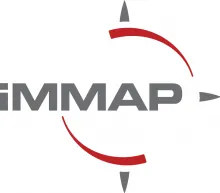iMMAP is an international not-for-profit organization that provides information management services to humanitarian and development organizations, enabling partners to make informed decisions that ultimately provide high-quality targeted assistance to the world’s most vulnerable populations.
iMMAP's mission is to harness the power of information to facilitate evidence-based decisions to improve people’s lives. By turning data into information, iMMAP creates knowledge for decision-makers operating in development contexts, situations of violence, post-disaster, and conflict recovery.
Priorities as a partner of the Global Partnership for Sustainable Development Data
Access to quality geospatial data is essential to the future success of iMMAP’s thematic programs and directly support key aspects such as early warning, crises monitoring, and mid-to long term environmental impacts. Earth observation (EO) data also provides a unique value offering to the iMMAP thematic programs as it supports;
- Distance from target observations, collecting data without physical contact and often in areas that are inaccessible, or too dangerous to enter, rendering remote sensing the only information source available;
- Wide area coverage, large areas can be covered with variable extent, under the same imaging conditions;
- Objective reporting, providing consistent scientifically sound, trustworthy data that can be repeated;
- Globally available, ensuring fast and easy access from anywhere around the globe;
- Time-series, repetitive acquisition, and analysis of data, enables constant monitoring in future and past time steps which is a key factor for trend analysis.
The humanitarian sector is in urgent need of access to satellite data that has been processed to a final analysis ready state. Analysis Ready Data (ARD) refers to data that have been optimally processed (atmospheric, radiometric, and geometric correction) and organized into a form that allows immediate analysis with minimum additional user effort and interoperability both through time and with other datasets. ARD is essential for the development of value-added products in support of development agendas such as the UN Sustainable Development Goal’s (SDGs), particularly for Clean Water and Sanitation (SDG-6), Sustainable Cities and Communities (SDG-11), Climate Action (SDG -13) and Life on Land (SDG-15).
The Open Data Cube (ODC), created and facilitated by the Committee on Earth Observation Satellites (CEOS), National Aeronautics and Space Administration (NASA), Geoscience Australia (GA), and the United States Geological Survey (USGS) is an open-source software architecture that supports analysis ready satellite data packaged into "cubes" to minimize data preparation complexity and take advantage of modern computing for increased value and impact of Earth observation data. To date, the ODC community has facilitated the initiation and advancement of 20-country level data cubes around the world.
To tackle these issues and bridge the gap between users’ expectations and current Big Data analytical capabilities, iMMAP initiated the ODC project in November 2019, consisting of three phases: i) Design, ii) Prototype development, and iii) Operationalization.
The project has enabled in-house capacity development in the design, implementation, and deployment of the ODC architectures, and enabled the production of a number of value-added products that directly support the iMMAP thematic programs. Prototype algorithms that have been implemented include:
- The fractional cover and vegetation phenometrics that assess the photosynthetic activity in plants
- The land productivity/degradation (SDG-15.3.1) algorithm that performs a long-term trend analysis to determine if an area's vegetation structure is “stable, “degrading” or “improving”
- Water quality assessment (SDG-6.6) based on Chlorophyll-a concentrations
- Impervious surface mapping in support of urban change detection (SDG-11.3.1)
